- Know the Mottos and their meanings of key government of India institutions founded in the 1950’s and 1960’s. Their origin lies in the Upanishads and Bhagavad Gita etc.
I first heard about motto in logos of institutions run by the government of India when a public interest litigation was filed in the Supreme Court (SC) in 2019 against the “discontinuance of the Hindi and Sanskrit morning prayer followed in Kendriya Vidyalaya’s on the ground that it was “based on Hindu religion” and was being imposed on the students.
“A bench of Justices R F Nariman and Vineet Saran said the petition raised questions of “seminal importance”, in particular as to the “correct interpretation of Article 28 (1) of the Constitution”. Article 28 (1) of the Constitution prohibits religious instruction in schools funded by the state.” Indian Express
I wondered if government funding of
Madrasa education violated Art 28 (1).
Solicitor General Tushar Mehta stated in the SC that the Sanskrit hymn had nothing religious about it and was a universal truth. “The hymn Asatoma
Satgamaya, Tamasoma Jyotirgamaya…’, only meant lead me from falsehood to truth and from darkness to light. Justice Nariman pointed out that the verses were drawn from the Upanishads. Mehta remarked that even the emblem of the Supreme Court had the verse from the Mahabharata. “It says Yato Dharma stato jaya ha.”
22 paintings in
the original constitution of India for e.g. Indus
Seal, Ramayana, Bhagavad Gita, Gautama Buddha, Mahavira Swami, Shiva Nataraja,
Shivaji Maharaj, Guru Goving Singh, Rani Laxmibai and Netaji Bose etc.
This prayer has been recited at the
Kendriya Vidayala schools since 1964.
Here is the Vidyala verse from the Brhadaranyaka Upanishad — I.iii.28 and its meaning. Source Mata Amrita site
ॐ असतो मा सद्गमय ।
तमसो मा ज्योतिर्गमय ।
मृत्योर्मा अमृतं गमय ।
ॐ शान्तिः शान्तिः शान्तिः ॥
Lead me
from the asat to the sat.
Lead me
from darkness to light.
Lead me
from death to immortality
Om Peace
Peace Peace.
To hear video of chant 6 minutes or shorter one 53 seconds
I had
forgotten all about GOI Mottos till I read Dharmic
Nation by R Jagannathan where he wrote that, “In the initial phase of Independence, essentially Indic-Vedic, Upanishadic and Puranic-terms like Satyameva Jayate (the national motto), Dharmo Rakshati Rakshitah (ideal of the Research and Analysis Wing-RAW), Yogaksheman Vahamyahan (LIC) etc. were not seen as a Hindu imposition on the general population.”
His words goaded me to compile a list (not all encompassing) of Indic terms. Format of presentation is institution, year founded, motto, source, pic and meaning with source.
1. National Emblem 1950 - Satyameva
Jayate from Mundaka Upanishad
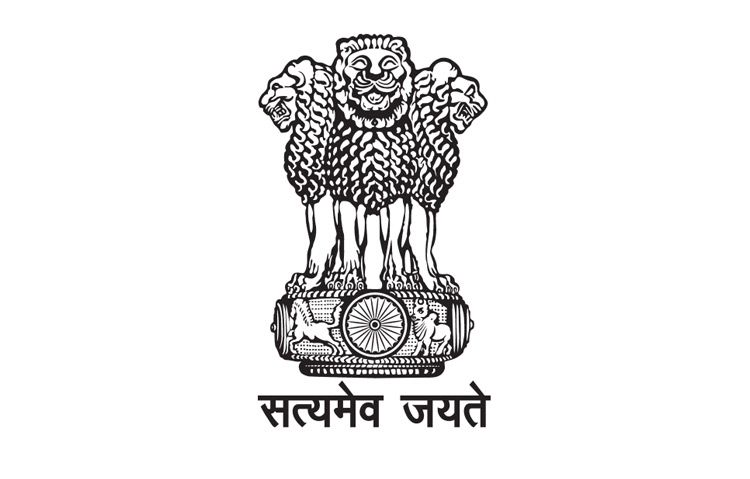
“Below the representation of the Lion Capital, the words Satyameva Jayate is written in Devnagari Script, which is also the National Motto of India. The words are a quote from Mundaka Upanishad, the last and most philosophical of the four Vedas and is translated as ‘Truth alone triumphs’.” Source
Read But
what about the original Satyameva Jayate
2. Kendriya Vidyalaya 1964-Tattvam Pooshan Apaavrunu from Isavasya
Upanishad
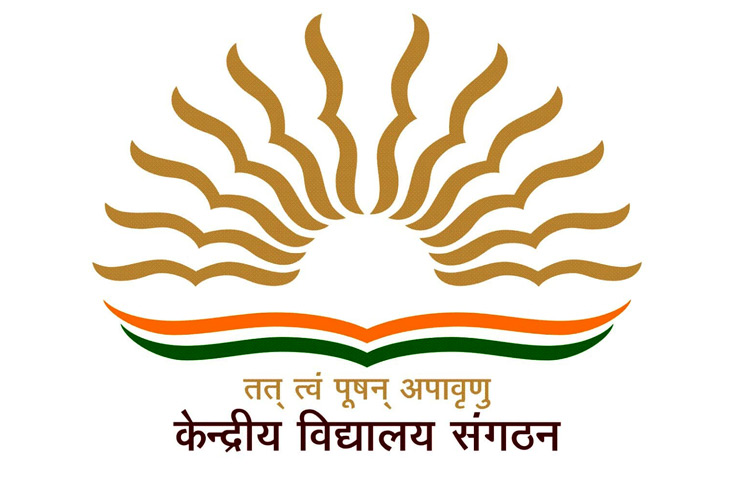
Tattvam Pooshan
Apaavrunu - Strive to remove the veil or lid of delusion to see Truth. Source
3. Supreme Court 1950- Yata Dharmastato
Jayah from Mahabharata.
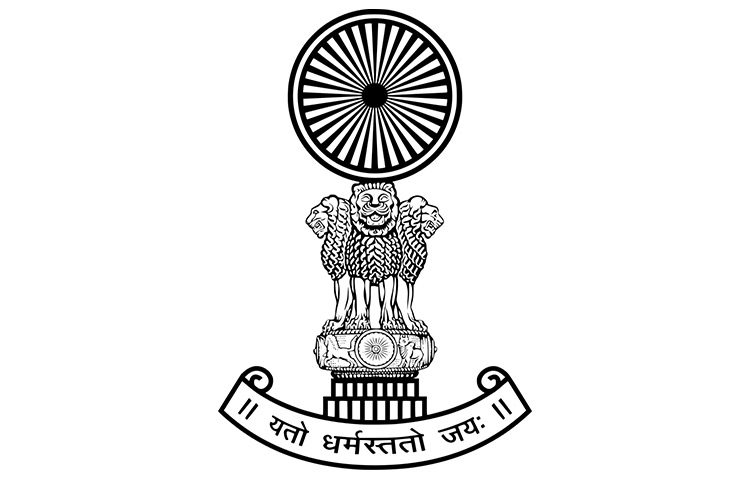
Yata
Dharmastato Jayah - Where there is righteousness and moral duty (dharma), there
is victory (jayah). Source
4. All India Radio- Bahujan Hitaya: Bahujan Sukhaya Wikipedia says Rig Veda, OR Buddha’s Mantra
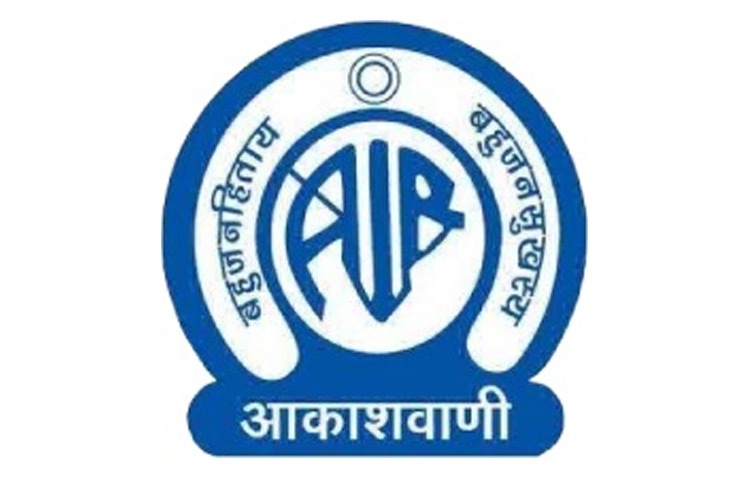
“Bahujanahitaya
Bahujanasukhaya” (for the happiness and welfare of all). The beginnings of AIR can be traced back to the 20s. The first radio broadcasts were done by the Radio Clubs of Bombay and Calcutta in 1923.
5. Indian Airforce 1950 (IAF)-Nabha Sparsham
Deeptam
Touch the sky with Glory- 11th chapter of the Holy Gita
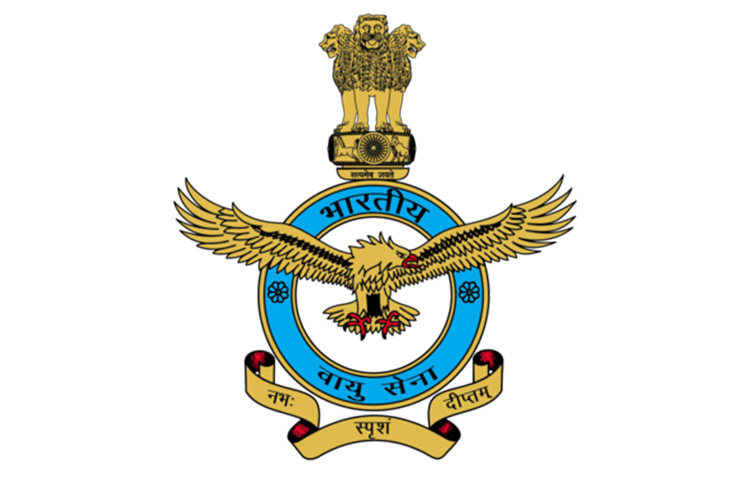
“The Motto of the Indian Air Force (Touch the sky with Glory) has been taken from the eleventh chapter of the Gita, the Discourse given by Lord Krishna to Arjuna on the battlefield of Kurukshetra during the Great War of Mahabharata. The Lord is showing His Supreme Divine form to Arjuna and the great form of the Lord is reaching the sky with glory, evoking fear and loss of self-control in the mind of Arjuna. The Indian Air Force, similarly, aims to overwhelm the adversaries with application of aerospace power in defence of the nation.” IAF
6. Indian Navy 1950-Sam no Varunah “Be auspicious unto us O Varuna” from the Vedas.
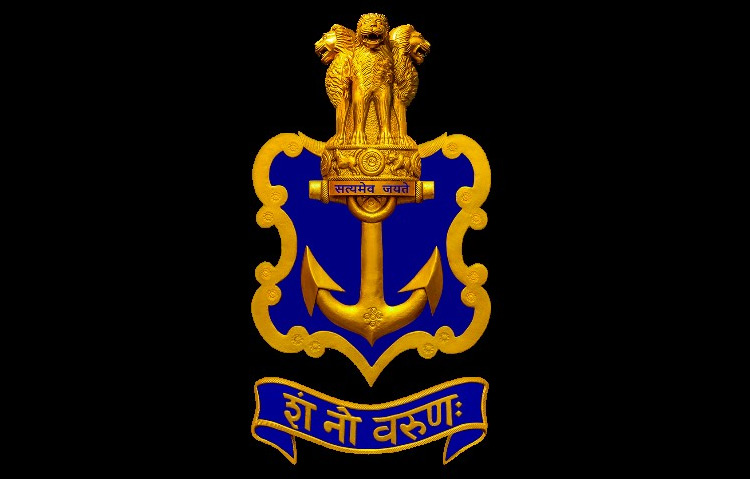
“On 26 January 1950, the Crown of the Royal Indian Navy's Crest was replaced by Ashoka Lion Motif for Indian Navy's Emblem. The invocation to Lord Varuna (The Sea God) in the Vedas was adopted by Indian Navy for its emblem, with the Motto: “Sam no Varunah”, meaning: “Be auspicious unto us O Varuna”. The inscription of “Satyamev Jayate” below the State Emblem was included in the Indian Navy's Crest.” Indian
Navy
7. Indian Army 1950 – Two views, sharing both. First and latest is सेवा परमो धर्म i.e. Sewa Parmo Dharma. Second, “Indian Army doesn't have a central motto. Different Regiments and Institutes have their individual mottos.” First is the
mantra for civil services as stated by PM Modi in 2019. Also read 26
mottos of Indian Armed Forces Units

“During the British rule, the motto of the ASC was HoniSoit Qui Mal Y Pense, which meant “evil to him who evil thinks". Firstpost.com
“The Logo of the Indian Army depicts two swords in cross below the National Emblem of India. The National Emblem and swords are in the yellow shade with the background in the shade of red.” Source
Presentations.gov.in.logos
8. National Human Rights Commission 1993-Sarv Bhavantu Sukhinah “May all beings be happy.”
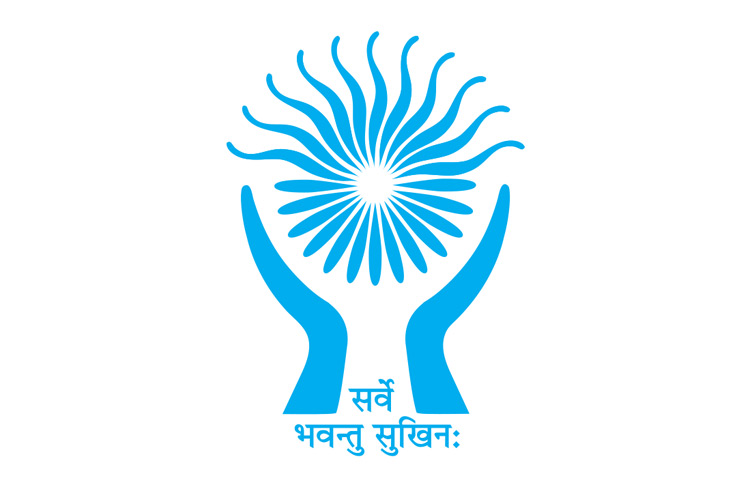
This Shanti Mantra is believed to be
from Brihadaranyaka Upanishad. Dr Sampananda
Mishra says, “We find this verse in a slightly different form in the last verse of Garuḍa Puraṇa (2.35.51) and in Bhavishya Puraṇa (3.2.35.14). Here the first line is different than how it is usually known and used. But the meaning remains almost same.”
“All should be happy, all should enjoy good health and all should prosper.” Source
SpeakingTree
9. Doordarshan 1965 - Satyam Shivam Sundaram Doordarshan is
inspired by the Sanskrit saying, “The Truth, the auspicious and the Beautiful.”
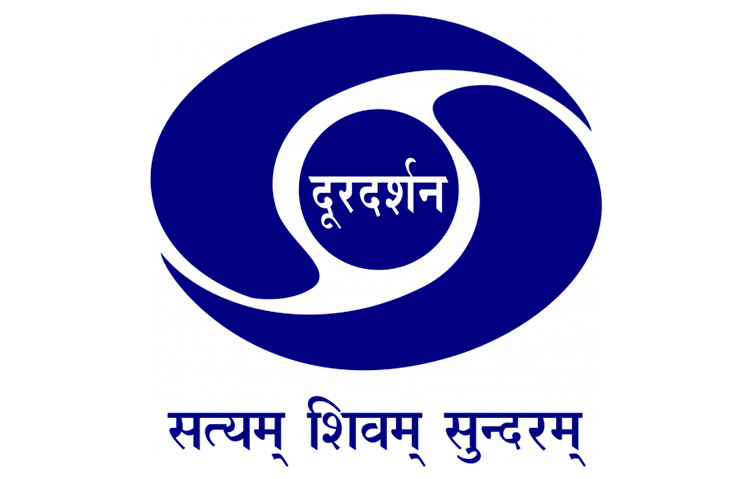
Truth, Auspiciousness and Beauty American
Institute of Vedic Studies
10. University Grants Commission 1956-Gyan Vigyan
Vimuktaye “Learning and Knowledge Liberate.”
“The motto has been depicted in its Logo in Devanagari script. The Logo has Ashoka Chakra at the top and symbolic representation of an open book, along with shape of a flying bird, thereby depicting the motto.” Source
11. Research and Analysis Wing (RAW) 1968 - Dharmo Rakshati Rakshta The Law protects
when it is protected.
“Dharmo Rakshati Rakshta basically translates to he who does not observe Dharma is destroyed, while he who follows it meticulously is protected. Dharma, in this context, stands for the nation.” Source
Indiatimes.com
12. Life Insurance Corporation of India 1956 - Yogakshemam Vahamyaham from Bhagavad Gita
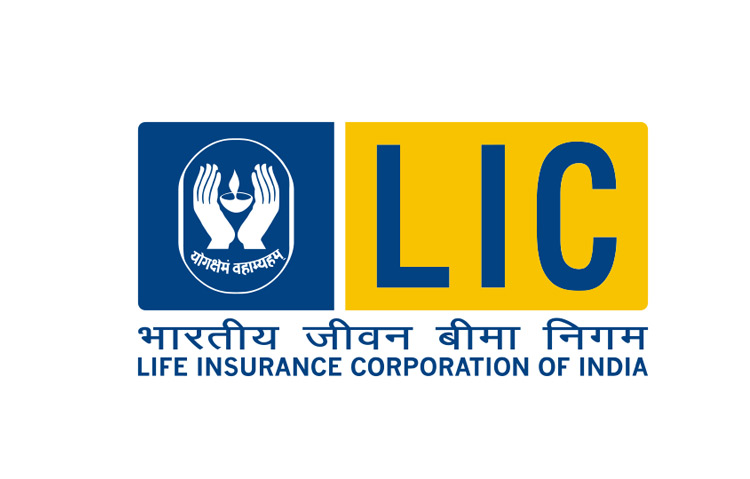
“LIC’s slogan ‘Yoga Kshemam Vahamyaham’ from Bhagavad Gita Chapter 9 means, “I am the provider of your security, & I fulfil all your needs.” Tweet
by resp Congress leader Jairam Ramesh For details read here or Commentary of
Verse 22 ch 9
“LIC Logo is made up of a flame that signifies life and the protective hands of life insurance that ensure its continuance.” Source
13. Archaeological
Survey of India 1861 – Pratnakirtimapavrinu
Let us uncover
glory of the past
14. Institute of Chartered Accountants of India 1949 – Ya Esha Supteshu Jagarti, “One who is awake amongst those who are asleep” from Katha Upanishad.
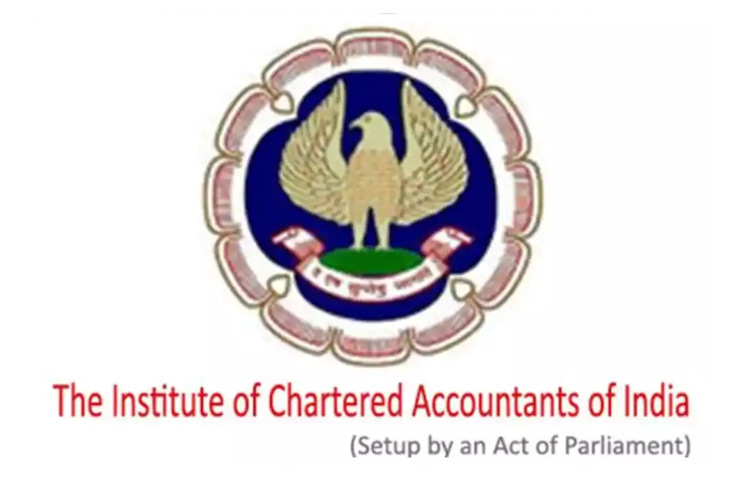
“The logo and the emblem of Garuda were given by Sri Aurobindo. CA. C. S. Shastri, a Chartered Accountant from Chennai went to Sri Aurobindo and requested him through a letter to give an emblem to the newly formed Institute of which he was an elected member from the Southern India.” Source
Observations
The motto within the logos of the above institutions, established during the 1950’s and 1960’s were inspired from the Vedas, Upanishads and Puranas.
So, in spite of the majority of the makers of modern India being influenced by European thoughts and practices whilst drafting the Constitution, in practice the institutions that were found during the 1950-60’s had their Mottos sourced from Indic thought.
Thus, they might be construed to be
supporters of the European word secularism, but were grounded in the Indic
thought.
In fact, these mottos put into question the honourable SC’s interpretation that secularism as
is currently understood (undefined word) is part of the basic structure of the
Indian Constitution.
Indonesia too has numerous
Sanskrit mottos in its logos according to Wikipedia. Read Samskriti,
Sanskrit and Indonesia
Read a Proposed Desi
Preamble that is based on Indic concepts and How Indian is
the Indian Constitution and What is Hate
Speech and Secularism
Errors if any are intended and without malafide intent. Do write back with source reference, if ok shall correct.
Reflect and decide.
Some learned think that Upanisadic thoughts will make India like Abrahamic countries. They forget this mantra, “Rig Veda mantra 10-13-1 addresses the entire humanity as children of the divine immortality and bliss - “shrinvantu
vishve amrutsya putrah.” Source
The moot point is, whether others will
allow Bharat and Bharatiyas to live in peace.
India needs to decolonize and rediscover
its Indic self.
Also
read
1. What is India
2. How can India realize potential
3. Incredible Women of Bharat
4. Who are Scheduled Tribes
5. Can the Vacation Policy of the SC shed its colonial
legacy
6. List of Institutions with Sanskrit Mottos